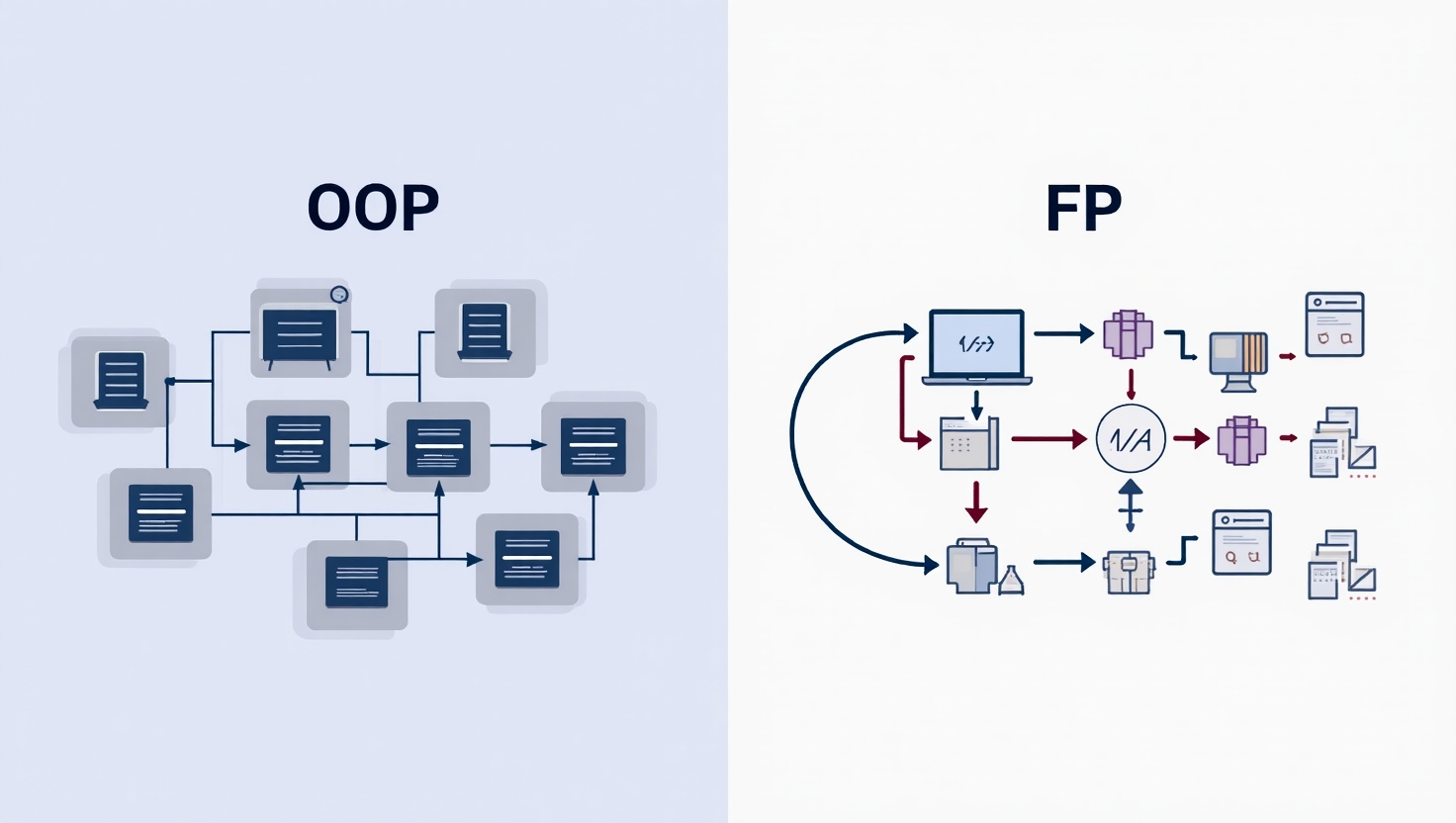Object-Oriented Programming (OOP)
OOP structures software around "objects," which are self-contained entities encapsulating both data (attributes) and the procedures (methods) that operate on that data.
Core Concepts of OOP:
- Objects: Instances of classes, representing specific entities with state and behavior.
- Classes: Blueprints for creating objects, defining their structure and behavior.
- Encapsulation: Bundling data and methods within an object, protecting internal state.
- Abstraction: Hiding complex implementation details, showing only essential information.
- Inheritance: Allowing a class to inherit properties and methods from another class, promoting code reusability.
- Polymorphism: Enabling objects of different classes to respond to the same method call in their own specific way.
Advantages of OOP:
- Modularity: Objects are self-contained, improving code organization and maintainability.
- Reusability: Inheritance promotes code reuse, reducing redundancy.
- Maintainability: Modular structure makes debugging and modification easier.
- Scalability: Well-suited for large and complex applications.
- Real-world Modeling: Allows for intuitive modeling of real-world entities.
- Team Collaboration: Clear boundaries between objects facilitate collaboration.
Disadvantages of OOP:
- Complexity: Can introduce complexity for simple problems.
- Tight Coupling: Poorly designed relationships can lead to brittle systems.
- State Management: Managing object state can be challenging in complex applications.
- Verbosity: Can sometimes result in more verbose code.
- Potential for Side Effects: Methods can modify object state, leading to hard-to-track side effects.
Functional Programming (FP)
FP treats computation as the evaluation of mathematical functions, emphasizing immutability and avoiding changes in state.
Core Concepts of FP:
- Pure Functions: Functions that always produce the same output for the same input and have no side effects.
- Immutability: Data structures cannot be changed after creation; operations create new data structures.
- First-Class Functions: Functions can be treated like any other value (assigned to variables, passed as arguments, returned from functions).
- Higher-Order Functions: Functions that operate on other functions (take them as arguments or return them).
- Function Composition: Combining simpler functions to build more complex ones.
- Referential Transparency: An expression can be replaced by its value without changing program behavior.
Advantages of FP:
- Simplicity and Predictability: Pure functions are easier to understand and reason about.
- Testability: Pure functions are easily testable with different inputs.
- Concurrency: Immutability simplifies writing concurrent and parallel code.
- Code Reusability: Higher-order functions and composition promote reuse.
- Maintainability: Focus on pure functions can lead to more maintainable code.
- Mathematical Foundation: Strong mathematical basis beneficial for certain applications.
Disadvantages of FP:
- Learning Curve: Concepts like higher-order functions and recursion can be challenging initially.
- State Management: Managing state requires specific techniques (e.g., monads).
- Performance: Creating new data structures can sometimes have performance overhead.
- Input/Output (I/O): Handling side effects requires specific constructs.
- Imperative Tasks: May feel less natural for inherently imperative tasks.
Key Differences Summarized:
| Feature | Object-Oriented Programming (OOP) | Functional Programming (FP) |
|---|---|---|
| Core Concept | Objects (encapsulating data and methods) | Functions (as the primary building blocks) |
| State | Mutable state is common and often encouraged | Immutable state is preferred and often enforced |
| Data Handling | Data and methods are tightly coupled within objects | Data is generally separate from functions |
| Side Effects | Methods can have side effects (modifying object state) | Pure functions avoid side effects |
| Control Flow | Often uses imperative constructs (loops, conditional statements) | Often uses recursion and higher-order functions |
Blending the Paradigms:
Many modern languages (e.g., Python, JavaScript, C++, Scala, Kotlin) support multiple paradigms, allowing developers to combine the strengths of both OOP and FP within the same codebase. This multi-paradigm approach offers flexibility in choosing the most suitable paradigm for different parts of an application.
Choosing the Right Paradigm:
The choice depends on the specific project requirements, complexity, team expertise, and desired trade-offs in areas like state management, concurrency, and maintainability.
Conclusion:
OOP and FP offer contrasting yet valuable approaches to software development. Understanding their core concepts, advantages, and disadvantages empowers developers to make informed decisions and leverage the most appropriate paradigm (or combination) for building effective and maintainable software solutions.
